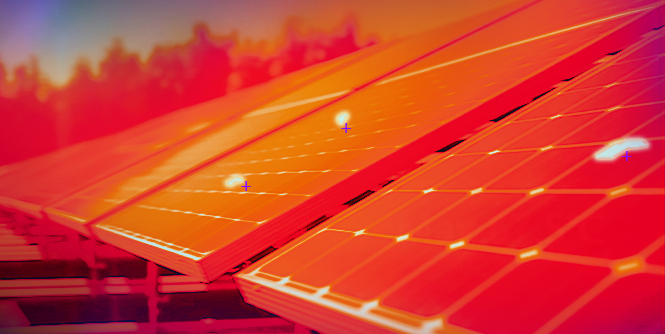When discussing the relationship between solar power generation and temperature, a common misconception arises: does higher temperature lead to more energy output? In reality, the connection between the two is more nuanced. In this article, we’ll explain how temperature affects solar power generation and provide tips on how to keep your solar plant operating at peak efficiency.
1. Solar Power Generation and Optimal Operating Temperatures
Solar power generation is the process of converting sunlight into electricity. On the surface, clear skies and intense sunlight suggest more energy input, which should theoretically result in higher power output. However, the situation is more complex than it seems.
Solar panels, which are primarily made from semiconductor materials, are the key component in the generation process. When temperatures rise too high, these materials' electrical properties change, resulting in a decrease in output power and efficiency.
Research shows that the optimal operating temperature for solar panels is around 25°C (77°F). For every degree above this, a solar panel’s output decreases by approximately 0.35%. As a result, even though sunlight may be more abundant in summer, higher temperatures can actually reduce overall energy output. Data from year-round monitoring confirms that spring and fall are often the most productive seasons for solar generation, with summer output potentially lagging due to excessive heat.

2. Other Negative Effects of High Temperatures
In addition to reducing panel efficiency, high temperatures can also lead to other issues such as “hot spot effects” and potential-induced degradation (PID). Hot spots occur when a portion of a panel overheats due to shading or damage, which can compromise the entire panel’s performance. PID results from the migration of ions within the panel’s materials, triggered by high temperatures, leading to a gradual decline in efficiency and longevity.
These issues underscore the importance of thoughtful plant design, proper cooling, and proactive maintenance to mitigate the impact of excessive heat on solar systems.
3. Tips for Maximizing Solar Efficiency
To counter the adverse effects of high temperatures and ensure efficient energy generation, here are some tips from Lesso Solar:
Choose High-Quality Brands
LESSO Solar emphasizes quality control, offering integrated production lines for panels, mounts, inverters, and energy storage systems. By overseeing every aspect of production, Lesso ensures the long-term stability and efficiency of its solar systems.
Invest in Professional Design
LESSO Solar sends experienced engineers to conduct on-site assessments using advanced drone technology for accurate terrain mapping. Each project receives a customized layout designed to maximize solar capture and operational efficiency based on local conditions.
Ensure Comprehensive After-Sales Support
With over 1,500 service centers nationwide, Lesso Solar provides a cutting-edge smart monitoring system that offers real-time 24/7 oversight, early warning alerts, and detailed plant performance reports. This proactive approach helps ensure timely maintenance and optimal system performance.
Understanding the complex relationship between temperature and solar power generation is crucial for maximizing energy efficiency. By investing in professional design and high-quality components, Lesso Solar offers reliable, high-performing solar solutions tailored to meet the needs of its customers.







